|
|
|
Книги Shakespeare William
|
Troilus and Cressida, long considered one of Shakespeare's most problematic plays, is both difficult and fascinating. Largely neglected during the eighteenth and nineteenth centuries it has recently proved popular and rewarding on the stage as well as in the study. This edition questions certain received ideas about the play's text, especially the relationship between quarto and folio and offers several new readings of old problems. Dawson's textual choices are often surprising but at the same time carefully grounded. He views the play from a performance perspective — both in the commentary as well as in the detailed section on stage history in the introduction. The introduction also covers the cultural context in which the play was written, probes the controversy about its early performance and provides extensive analysis of character, language, genre and contemporary significance. |

|
Over the last two decades there has been a resurgence of theatrical interest in Shakespeare's Pericles, which has been rescued from comparative neglect and is now frequently performed. This development is charted in the introduction to this edition, which differs radically from any other currently available. Doreen DelVecchio and Antony Hammond reject the current orthodoxies that the text is seriously corrupt and that the play is of divided authorship. They show how the 1609 quarto has features in common with the first quarto of King Lear, now widely regarded as being based on Shakespeare's manuscript. Likewise they regard the arguments concerning divided authorship as unproven and misleading. Instead they show the play to be a unified aesthetic experience. |
|
Penny Gay has written a new Introduction to this updated edition of Shakespeare's popular comedy. She stresses the play's theatricality, its elaborate linguistic games and its complex use of Ovidian myths. In addition, Gay analyzes its delicate balancing of romance and realism and exploration of gender, sexuality and identity. |

|
The Comedy of Errors has been popular on the stage during the last three centuries and has proved itself admirably suited to adaptation as pure farce and musical spectacle. For this updated edition, Ros King has provided a completely new Introduction to the existing text and commentary, in which she argues that the play cannot be regarded merely as a farcical romp based on a classical model, but belongs to the critically misunderstood genre of tragi-comedy. In stressing the seriousness which underlies the story, the Introduction picks out the play's religious imagery for special attention, whilst also engaging fully with the play's deft lightness of touch and its continuing popularity in the theatre. A fresh Reading List guides the reader towards further study. |
|
Philip Edwards deals succinctly with the exhaustive commentary and controversy which Hamlet has provoked in the manifestation of its tragic energy. Robert Hapgood has contributed a new section on prevailing critical and performance approaches to the play in this updated edition. He discusses recent film and stage performances and actors of the Hamlet role as well as directors of the play. His account of new scholarship stresses the role of memory in the play and the impact of feminist and performance studies upon it. |

|
Professor Evans helps the reader to visualise the stage action of Romeo and Juliet, a vital element in the play's significance and useful to students approaching it for the first time. The history of the play in the theatre is accompanied by illustrations of notable productions from the eighteenth century onwards. A lucid commentary alerts the reader to the difficulties of language, thought and staging. For this updated edition Thomas Moisan has added a new section to the Introduction which takes account of the number of important professional theatre productions and the large output of scholarly criticism on the play which have appeared in recent years. The Reading List has also been revised and augmented. |

|
In his own time, Shakespeare was best known to the reading public as a poet, and even today copies of his Sonnets regularly outsell everything else he wrote. For this edition, Stephen Orgel offers a warmly personal and original introduction to Shakespeare's best-loved and most widely read poems. Careful readings emphasize their sexual and temperamental ambiguity, their textual history and the special perils an editor faces when modernizing the original quarto's spelling, punctuation, and even layout. The edition retains the text of the Sonnets prepared by Gwynne Evans, together with his detailed notes on each, and a line-by-line commentary. Throughout, the 'voices' of the sonnets appear in all their intricacy and dramatic power. |
|
A new section of the Introduction to this updated edition considers important professional theater productions and the large output of scholarly criticism on the play which have appeared in recent years. The Reading List has been revised and augmented to reflect the scope of the revised edition. |

|
Alexander Leggatt has written a new Introduction to this updated edition of Russell Fraser's text on one of Shakespeare's most ambiguous plays. Leggatt's interest in performance informs his introduction and account of the instability of the main characters. He offers a thoughtful account of the play's critical and theatrical fortunes to the end of the twentieth century, as well as of the audience experience. An updated reading list completes the edition. |
|
Since the rediscovery of Elizabethan stage conditions early this century, admiration for Measure for Measure has steadily risen. It is now a favourite with the critics and has attracted widely different styles of performance. At one extreme, the play is seen as a religious allegory; at the other, it has been interpreted as a comedy protesting against power and privilege. Brian Gibbons focuses on the unique tragi-comic experience of watching the play, the intensity and excitement offered by its dramatic rhythm, the reversals and surprises which shock the audience even to the end. His introduction considers how the play's critical reception and stage history have varied according to prevailing social, moral and religious issues, which have remained highly sensitive. This updated edition contains a new introductory section by Angela Stock, which describes recent stage, film and critical interpretations, and an updated reading list. |

|
For this updated edition of Shakespeare's most celebrated war play, Professor Gurr has added a new section to his introduction which considers recent critical and stage interpretations, especially concentrating on the 'secret' versus 'official' readings of the play. He analyses the play's double vision of Henry as both military hero and self-seeking individual. Professor Gurr shows how the patriotic declarations of the Chorus are contradicted by the play's action. The play's more controversial sequences are placed in the context of Elizabethan thought, in particular the studies of the laws and morality of war written in the years before Henry V. Also studied is the exceptional variety of language and dialect in the play. The appendices provide a comprehensive collection of source materials, while the stage history shows how subsequent centuries have received and adapted the play on the stage and in film. An updated reading list completes the edition. |

|
To Shakespeare's contemporaries, Richard II was a balanced dramatisation of the central political and constitutional issue of the time, how to cope with an unjust ruler. But over the last century or so, the play came to be regarded as the poetic fall of a tragic hero. The Introduction to this edition provides a full context for both the Shakespearean and the modern views of King Richard's fall. For this updated edition the editor has added a new section to the Introduction which takes account of the number of important professional theatre productions and the large output of scholarly criticism on the play which have appeared in recent years. The Reading List has also been revised and augmented. |

|
For this updated critical edition of King Lear, Professor Halio has added a new introductory section on recent stage, film, and critical interpretations of the play. He gives a comprehensive account of Shakespeare's sources and the literary, political and folkloric influences at work in the play; a detailed reading of the action; and a substantial stage history of major productions. Professor Halio chooses the Folio as the text for this edition. He explains the differences between the quarto and Folio versions and alerts the reader to the rival claims of the quarto by means of a sampling of parallel passages in the Introduction and by an appendix which contains annotated passages unique to the quarto. An updated reading list completes the edition. |
|
Shakespeare's As You Like It can appear bright or sombre in performance: a feast of language and a delight for comic actors; or a risk-taking exploration of gender roles. This updated edition, containing a brand new Introduction, provides an account of what makes this popular play both innocent and dangerous. There is a section on recent critical, stage and film interpretations of the play, an updated reading list and a new appendix on an early court performance of As You Like It in 1599. Mapping the complexities of the play's setting — a no man's land related to both France and England, the edition also includes detailed commentary on its language and an analytical account of performance. |

|
Titus Andronicus is still regarded by many as a bad play of dubious authorship. Its adversaries have abhorred the violence of the action and the apparent lapses in the quality of the verse. Since 1945, however, the play has been taken increasingly seriously in both the theatre and the study: the violence and cruelty it depicts were disconcertingly matched by the events of two World Wars. Hughes joins those critics who take the play seriously, arguing for its unity of theme and its grim humour, and demonstrates that it is the work of a brilliant stage craftsman, confident in his mastery of space, movement and verse. The text is based on the first quarto, supplemented by crucial additions and stage directions from the Folio. For this updated edition, a new section is included on recent stage, film and critical interpretations by Sue Hall-Smith. An updated reading list completes the edition. |
|
Karl Klein's edition of Timon of Athens introduces Shakespeare's play as a complex exploration of a corrupt, moneyed society. Klein sees the protagonist not as a failed tragic hero, but as a rich and philanthropic nobleman, surrounded by greed and sycophancy, who is forced to recognise the inherent destructiveness of the Athenian society from which he retreats in disgust and rage. Klein establishes Timon as one of Shakespeare's late works, arguing, contrary to recent academic views, that evidence for other authors besides Shakespeare is inconclusive. The edition shows that the play is neither tragedy, satire nor comedy, but a subtle and complete drama whose main characters contain elements of all three genres. This edition was near completion at the time of Karl Klein's death, and was prepared for publication by his colleagues and by Brian Gibbons. |
|
The Tempest is one of the most suggestive, yet most elusive of all Shakespeare's plays, and has provoked a wide range of critical interpretations. It is a magical romance, yet deeply and problematically embedded in seventeenth-century debates about authority and power. In this updated edition, David Lindley has thoroughly revised the introduction and reading list to take account of the latest directions in criticism and performance. Including a new section on casting in recent productions, Lindley's introduction explores the complex questions this raises about colonisation, racial and gender stereotypes, and the nature of the theatrical experience. Careful attention is also given to the play's dramatic form, stagecraft, and use of music and spectacle, to demonstrate its uniquely experimental nature. |

|
King Richard III is one of Shakespeare's most popular and frequently performed plays. Janis Lull's introduction to this new edition, based on the First Folio, emphasises the play's tragic themes — individual identity, determinism and choice — and stresses the importance of women's roles in the play. It also underscores the special relationship between Richard III and Macbeth, demonstrating that the later tragedy re-examines issues raised in the earlier one. A thorough performance history of stage and film versions of Richard III shows how the text has been cut, rewritten and reshaped by directors and actors to enhance the role of Richard at the expense of other parts, especially those of the women. This updated edition contains a new introductory section covering recent criticism and performances — including the RSC cycles of the history plays — of this perennially popular play. The notes define the play's language in terms easily accessible to contemporary readers. |
|
Charles Edelman focuses on the play's sexual politics and recent scholarship devoted to the position of Jews in Shakespeare's time in this new edition. He surveys the international scope of theatrical interpretations of The Merchant in the 1980s and 1990s as well as different ways of tackling the troubling figure of Shylock. |

|
Much Ado has always been popular on the stage. This edition pays especial attention to the history and range of theatrical interpretation, in which the most famous actors, from the time of Garrick to the present, have appeared as the sparring lovers Benedick and Beatrice. A full commentary includes annotation of the many sexual jokes in the play that have been obscured by the complexity of Elizabethan language. For this updated edition Angela Stock has added a new section to the Introduction in which she reviews the romantic and the darker, more cynical aspects of the play in the light of late twentieth-century stage, film and critical interpretations. She also tackles the interesting question of Beatrice's proper age and the critical fortunes of Hero and Claudio in terms of the play's interest in sexuality and misogyny, eavesdropping and deception. |
|